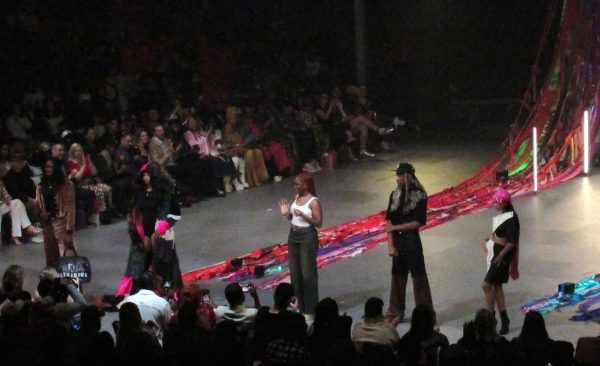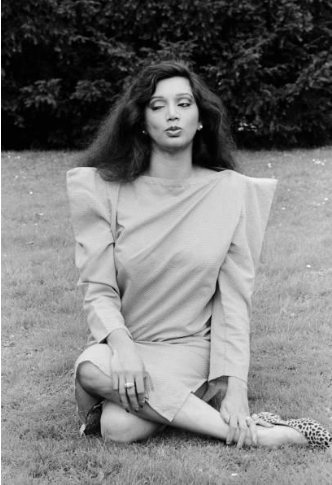Innovation the name of the game at Chinese fashion exhibit in Technology Building
The third floor of the new Technology Building on campus bore witness to a new chapter in couture. Chinese fashion designer Shao Fang and textile designer Shen Li opened their new collections there Thursday.
In an “East meets West” concept, Fang blends Greek Platonic solids (or three-dimensional shapes) with the Wu Xing, or Five Elements — wood, metal, earth, fire, and water — to create “In the Name of Plato.” Each handcrafted garment highlights a platonic solid and its corresponding element.
One of Fang’s garments, a cool gray wool and knit dress, features three-dimensional icosahedrons, or 20-faced shapes, extending from the bodice. According to Plato, the icosahedron represents water. Fang does justice to the character of water by giving this garment a long, graceful train.
Through a translator, Fang shared with those present at her exhibit that she spent a mere two months in research and three months constructing eleven garments.
Need a comparison to help clarify that kind of production? Apparel design students are required to create four to six garments for their senior collections in three months. Fang’s collection has nearly twice the number of works, doubtless prompting questions about how she comes up with her creations.
“I begin the creative process by visiting museum collections, but I also find inspiration from my artist friends,” Fang said.
Fashion and textile technology professor Elaine Polvinen spoke with great enthusiasm about Fang’s skill in creating designs that are equally strong in terms of concept and construction.
“It was a wonderful blend of aesthetic, visual, and technical design,” Polvinen said. “It is my goal for the apparel students here that they have that balance of visual, aesthetic, and technical design, that they can make anything they think of become a reality.”
Adjacent to Fang’s exhibition was the work of Shen Li, textile designer. A series of vibrantly colored wool felt designs were featured on display.
Polvinen explained the extent to which Li’s designs were unusual in skill and technique. Being experienced in the felt process, she emphasized the difficulty in attaining a felt finer than an eighth of an inch and declared that Shen Li’s work was exceptionally fine.
“I’ve created many garments from felt, such as hats and jackets, but you could create a beautiful light weight dress with the type of felt Shen Li’s makes.” Polvinen said.
Fang and Li’s visiting collections are just the beginning of exciting cross-cultural exchanges within the Fashion and Textile Technology program.
Fashion and textile technology chair and associate professor Lynn Boorady explained her goals in introducing the Chinese artists’ work to her students.
“It is important for our students to see who their competition is, to be inspired by other masters in their field, and to expand their notions of what fashion is,” Boorady said.
“In The Name Of Plato” and Shen Li’s textile designs are on display until Sept. 26. The collection can be viewed during regular building hours, 8 a.m-8 p.m.
Kaitlin Russo can be reached by e-mail at [email protected].








